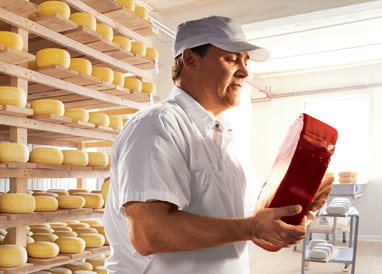Why Floridia Cheese Thomastown Is a Gem in Melbourne Made Cheese
Why Floridia Cheese Thomastown Is a Gem in Melbourne Made Cheese
Blog Article
Unlocking the Tricks of Artisanal Cheese Making: A Step-by-Step DIY Overview
In the realm of culinary workmanship, artisanal cheese making stands as a testament to the fragile equilibrium between tradition and innovation. As we embark on this journey to demystify the art of creating beautiful cheeses, we are faced with a tapestry of abilities and tricks waiting to be unraveled.
Selecting the Right Milk
When beginning on the trip of artisanal cheese making, the selection of milk plays a vital duty in determining the high quality and features of the last item. The kind of milk selected influences the flavor, structure, and generally account of the cheese.
When choosing milk for cheese production, it is necessary to think about the fat web content. Higher fat web content in milk can lead to a creamier and richer cheese, while reduced fat content may cause a drier and stronger texture. In addition, the resource of the milk, whether from cows, goats, lamb, or buffalo, adds distinct flavors and attributes to the cheese (Melbourne Made Cheese). Each sort of milk brings its very own nuances, permitting a vast array of cheese varieties to be crafted based on the chosen milk. Ultimately, the option of milk is a fundamental choice that sets the structure for an effective artisanal cheese-making venture.
Culturing and Coagulating
To start the cheese-making process, the crucial steps of culturing and coagulating should be thoroughly performed to change milk right into curds and whey. The type of society utilized can considerably impact the taste, structure, and ripening of the final cheese item.
.jpg)
The timing and temperature level control during culturing and coagulation are important aspects that affect the final result of the cheese. Appropriate execution of these actions is necessary to make certain the desired appearance, flavor, and consistency of the artisanal cheese being generated.
Draining Pipes and Pressing Curds
After the milk healthy proteins have coagulated and the curds have been cut to release whey, the following essential action in artisanal cheese making includes draining and pushing the curds to attain the desired appearance and uniformity of the last cheese item. The time for draining pipes can differ depending on the type of cheese being made and the preferred dampness material.
When the curds have actually sufficiently drained pipes, the next step is pressing. Pressing assists remove any type of staying whey and compacts the curds to develop a solid cheese wheel. Pressing can be done making use of specialized cheese presses that use mild and consistent stress over an amount of time. The period and stress used during pressing will certainly affect the final appearance of the cheese, click here for more info from creamy and soft to tough and company. Appropriate draining and pressing are vital actions that significantly influence the high quality important source and qualities of the artisanal cheese being produced.
Aging and Flavoring Strategies
Implementing careful aging and flavor strategies is essential in boosting the deepness and intricacy of artisanal cheeses, raising their preference accounts to splendid degrees of improvement and refinement. Aging plays a vital function in establishing the one-of-a-kind flavors and textures that differentiate artisanal cheeses.
Flavoring techniques likewise add dramatically to the final preference of artisanal cheeses. Cheesemakers may select to present additional flavors by incorporating components such as natural herbs, seasonings, or perhaps fruits into the cheese during the manufacturing procedure. In addition, some cheeses are cleaned or massaged with various liquids, such as salt water or alcohol, to boost their tastes and textures.
Covering and Storing Cheeses

Verdict
In conclusion, mastering the art of artisanal cheese making involves thoroughly picking the best milk, adhering to specific culturing and coagulating processes, draining pipes and pressing curds properly, and utilizing different aging and flavor strategies. Keep in mind check here to cover and save your cheeses effectively to ensure optimal taste and appearance development.
Each type of milk brings its very own nuances, allowing for a large variety of cheese selections to be crafted based on the picked milk.After the milk healthy proteins have coagulated and the curds have been cut to release whey, the following essential action in artisanal cheese making includes draining pipes and pushing the curds to attain the wanted appearance and consistency of the final cheese product. The majority of cheeses need to be covered in wax paper or cheese paper to enable them to breathe while safeguarding them from drying out. For cheeses that require to continue aging, such as bloomy peels or washed peels, ensure they are stored in a trendy environment like a cheese cavern or a refrigerator established to the appropriate temperature. By paying attention to the covering and storage space of artisanal cheeses, cheese makers and enthusiasts can preserve the integrity of these delicacies and fully appreciate their complex tastes.
Report this page